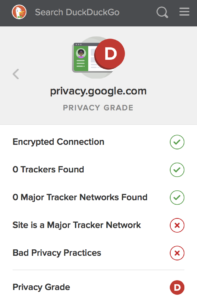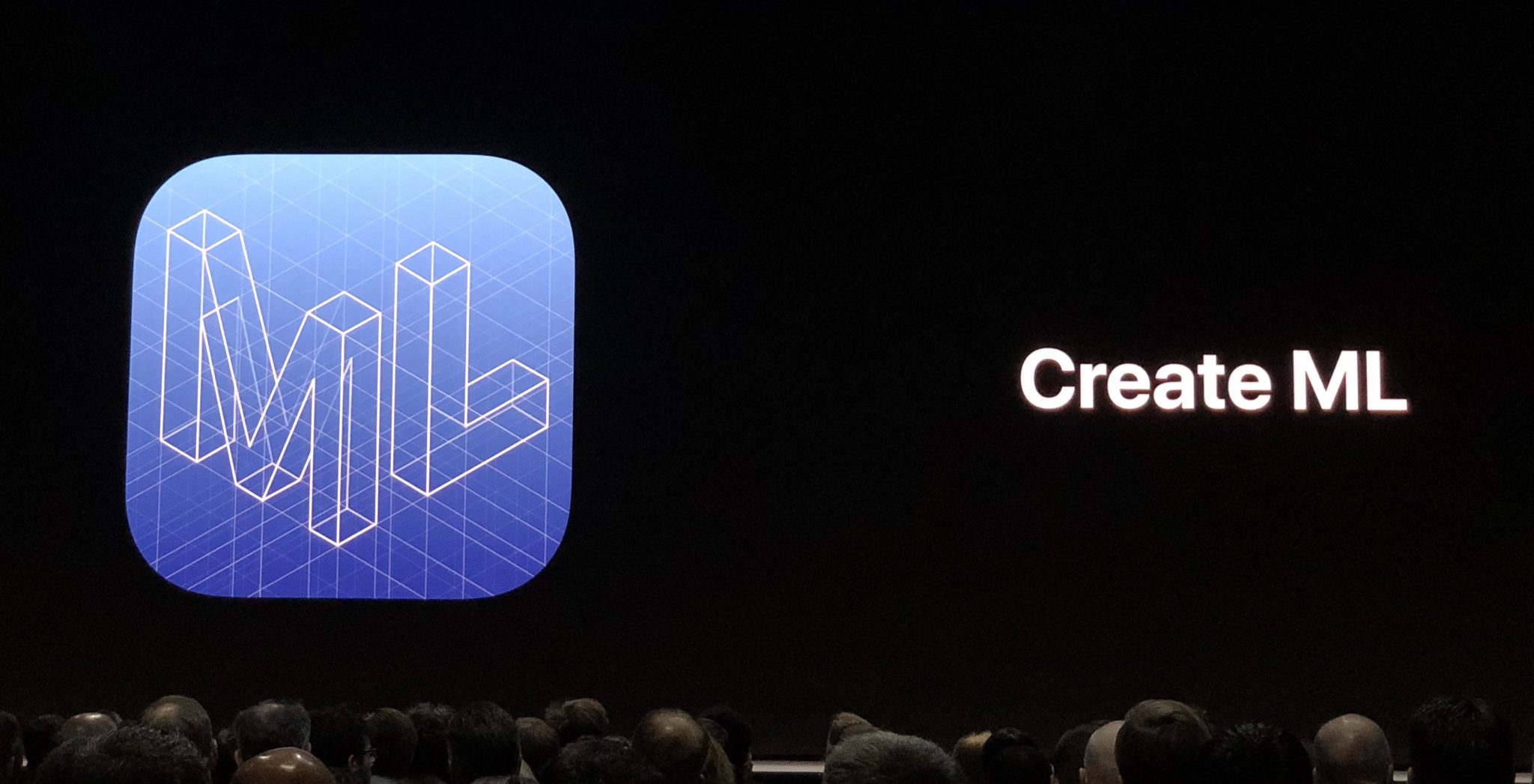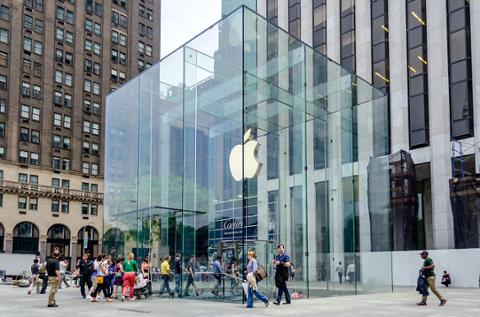When this year's
Google I/O rolled into town, Google failed to aggressively tackle the issue of privacy. Although new, massive data breaches seem to pop up weekly, and Facebook is under a hot spotlight for its handling of sensitive user data, Google didn't spend much time trying to differentiate itself from the herd when it comes to privacy and security. That left an opening for Apple at this year's WWDC to double down on data privacy. Throughout the conference, Apple has made a point of emphasizing how privacy matters, especially in sessions. [caption id="attachment_181333" align="aligncenter" width="197"]

A privacy page that's not... private.[/caption] A great example of Apple’s dedication to privacy comes with machine learning (ML). In terms of building ML-related platforms, Google
asks that developers use TensorFlow and/or Firebase, which adhere to the company’s overarching
privacy policies. The bottom line: Google and developers must obey the law, and users can always choose to lock their data down. This protects users who might upload their own data in an app, but only when they purposefully and actively manage Google’s data collection and peering options. These settings aren't always easy to find. Apple takes a different approach with
Create ML, a bespoke service for machine learning on the Mac and iOS devices. It allows developers to train machine learning models, test them, and implement machine learning in their apps without ever leaving the confines of Apple’s ecosystem. (Prior to Create ML’s launch, developers had to import trained machine learning models from services such as TensorFlow.) Create ML is all-Swift, too. It’s approachable for iOS and macOS developers; at WWDC, Apple made a point to note that Create ML wouldn't require developers to adopt a different language just to work with machine learning. That might have been a non-starter for those who were on the fence about using machine learning in their iOS or macOS apps. Rather than a cloud-based service like TensorFlow, all in-app machine learning with Create ML happens on-device. This is true for both training and processing, which take place on a Mac's CPU and GPU. None of your data ever leaves your phone, tablet, or computer. For users, this means boosted privacy without actually having to do anything.

This privacy battle extends to Google’s home turf: the web. Apple wants to make its presence known there, too. In macOS 10.14 (Mojave), the Safari browser will allow users to disable social sharing buttons and websites' comments sections. Some will see such a toggle as a nuisance, but Apple clearly wants to help disguise your travels on the web. In an interview with
CNN, Tim Cook reiterated his company’s firm stance on personal data privacy, and noted how power is being returned to users. He’s right, and that’s a problem for Google. At some point, this level of privacy will become expected, not novel. Google seems woefully unprepared for such a reckoning. While it may not seem so today, machine learning is the next great data-collection frontier. Services will only get smarter when they learn more about you and your habits. The difference is Apple isn’t asking us to also share that data with the company, or advertisers. Safari’s new privacy settings are totally unnecessary, but Apple chose to add them so its users could browse the web in peace. It could have gathered data via a cloud-based machine learning service and fed it to Siri; instead, it’s spending gobs of cash to improve Siri the hard way (and let users do it themselves). Apple is clearly drawing its line in the sand against Google, which could give it an advantage in a new era where users are more thoughtful about privacy.
 A privacy page that's not... private.[/caption] A great example of Apple’s dedication to privacy comes with machine learning (ML). In terms of building ML-related platforms, Google asks that developers use TensorFlow and/or Firebase, which adhere to the company’s overarching privacy policies. The bottom line: Google and developers must obey the law, and users can always choose to lock their data down. This protects users who might upload their own data in an app, but only when they purposefully and actively manage Google’s data collection and peering options. These settings aren't always easy to find. Apple takes a different approach with Create ML, a bespoke service for machine learning on the Mac and iOS devices. It allows developers to train machine learning models, test them, and implement machine learning in their apps without ever leaving the confines of Apple’s ecosystem. (Prior to Create ML’s launch, developers had to import trained machine learning models from services such as TensorFlow.) Create ML is all-Swift, too. It’s approachable for iOS and macOS developers; at WWDC, Apple made a point to note that Create ML wouldn't require developers to adopt a different language just to work with machine learning. That might have been a non-starter for those who were on the fence about using machine learning in their iOS or macOS apps. Rather than a cloud-based service like TensorFlow, all in-app machine learning with Create ML happens on-device. This is true for both training and processing, which take place on a Mac's CPU and GPU. None of your data ever leaves your phone, tablet, or computer. For users, this means boosted privacy without actually having to do anything.
A privacy page that's not... private.[/caption] A great example of Apple’s dedication to privacy comes with machine learning (ML). In terms of building ML-related platforms, Google asks that developers use TensorFlow and/or Firebase, which adhere to the company’s overarching privacy policies. The bottom line: Google and developers must obey the law, and users can always choose to lock their data down. This protects users who might upload their own data in an app, but only when they purposefully and actively manage Google’s data collection and peering options. These settings aren't always easy to find. Apple takes a different approach with Create ML, a bespoke service for machine learning on the Mac and iOS devices. It allows developers to train machine learning models, test them, and implement machine learning in their apps without ever leaving the confines of Apple’s ecosystem. (Prior to Create ML’s launch, developers had to import trained machine learning models from services such as TensorFlow.) Create ML is all-Swift, too. It’s approachable for iOS and macOS developers; at WWDC, Apple made a point to note that Create ML wouldn't require developers to adopt a different language just to work with machine learning. That might have been a non-starter for those who were on the fence about using machine learning in their iOS or macOS apps. Rather than a cloud-based service like TensorFlow, all in-app machine learning with Create ML happens on-device. This is true for both training and processing, which take place on a Mac's CPU and GPU. None of your data ever leaves your phone, tablet, or computer. For users, this means boosted privacy without actually having to do anything.  This privacy battle extends to Google’s home turf: the web. Apple wants to make its presence known there, too. In macOS 10.14 (Mojave), the Safari browser will allow users to disable social sharing buttons and websites' comments sections. Some will see such a toggle as a nuisance, but Apple clearly wants to help disguise your travels on the web. In an interview with CNN, Tim Cook reiterated his company’s firm stance on personal data privacy, and noted how power is being returned to users. He’s right, and that’s a problem for Google. At some point, this level of privacy will become expected, not novel. Google seems woefully unprepared for such a reckoning. While it may not seem so today, machine learning is the next great data-collection frontier. Services will only get smarter when they learn more about you and your habits. The difference is Apple isn’t asking us to also share that data with the company, or advertisers. Safari’s new privacy settings are totally unnecessary, but Apple chose to add them so its users could browse the web in peace. It could have gathered data via a cloud-based machine learning service and fed it to Siri; instead, it’s spending gobs of cash to improve Siri the hard way (and let users do it themselves). Apple is clearly drawing its line in the sand against Google, which could give it an advantage in a new era where users are more thoughtful about privacy.
This privacy battle extends to Google’s home turf: the web. Apple wants to make its presence known there, too. In macOS 10.14 (Mojave), the Safari browser will allow users to disable social sharing buttons and websites' comments sections. Some will see such a toggle as a nuisance, but Apple clearly wants to help disguise your travels on the web. In an interview with CNN, Tim Cook reiterated his company’s firm stance on personal data privacy, and noted how power is being returned to users. He’s right, and that’s a problem for Google. At some point, this level of privacy will become expected, not novel. Google seems woefully unprepared for such a reckoning. While it may not seem so today, machine learning is the next great data-collection frontier. Services will only get smarter when they learn more about you and your habits. The difference is Apple isn’t asking us to also share that data with the company, or advertisers. Safari’s new privacy settings are totally unnecessary, but Apple chose to add them so its users could browse the web in peace. It could have gathered data via a cloud-based machine learning service and fed it to Siri; instead, it’s spending gobs of cash to improve Siri the hard way (and let users do it themselves). Apple is clearly drawing its line in the sand against Google, which could give it an advantage in a new era where users are more thoughtful about privacy. 


